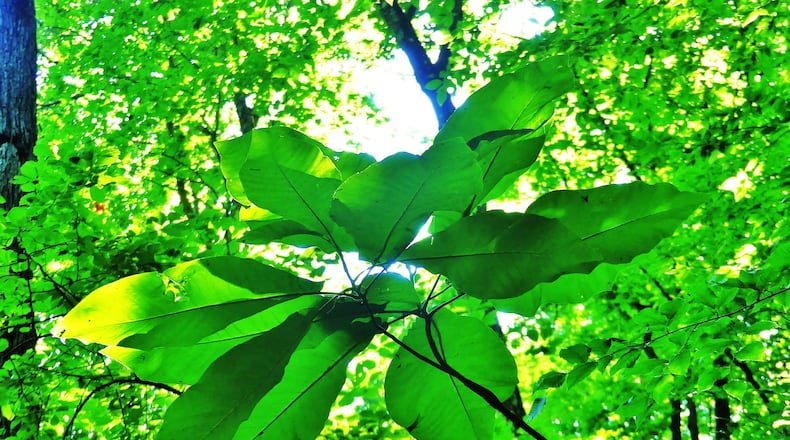Inside hectic I-285 and within Atlanta’s city limits, one can still find pockets of intact, old-growth forest teeming with wildlife and biological diversity, remnants of the original forest that was here before European settlement some 200 years ago.
One such place is the 135-acre Cascade Springs Nature Preserve in southwest Atlanta, where a small, picturesque waterfall cascades into a stretch of Utoy Creek strewn with moss-covered boulders. A bloody Civil War clash, the Battle of Utoy Creek, was fought here in August 1864.
But it was the preserve’s superb natural richness that drew us there last weekend for a combined Georgia Botanical Society and Atlanta Audubon field trip.
“I love this place,” said our leader, naturalist Leslie Edwards, lead author of the book “The Natural Communities of Georgia.” Despite being in a dense urban area, she noted, Cascade Springs harbors amazing biological diversity, including three major forest habitats — southern mesic forest, riparian (streamside) forest and oak-pine-hickory forest. Each one is characterized by “indicator species,” or the trees, birds, wildflowers and other flora and fauna typical of such environments.
During our walk, we focused mostly on the trees.
In the mesic habitat (a moist, hardwood forest with rich, fertile soil), we found the beautiful tree for which Cascade Springs is best known, the big-leaf magnolia. It grows there in unusual abundance. A breathtaking sight is sunlight streaming through a big leaf’s 12- to -30-inch-long leaves, the largest simple leaves of any native tree in North America.
We also identified other mesic forest indicator species — American beech, tulip poplar, Southern sugar maple and Northern red oak.
The presence of trees like sycamore, American hornbeam and sweet gum indicated that we were in a riparian forest. Likewise, white oaks, hickories and loblolly pines meant that we had entered an oak-pine-hickory habitat.
IN THE SKY: The moon will be first quarter on Monday. Mercury is low in the west around sunset. Venus is low in the east just before sunrise. Mars is very low in the west around dusk and sets about an hour later. Jupiter rises in the east around midnight; Saturn rises in the east a few hours later.
About the Author
Keep Reading
The Latest
Featured


